Relieve Sciatica, Restore Comfort
Our sciatica chiropractic care targets the root drivers of radiating leg pain—nerve irritation, joint restriction, and load intolerance—so you can sit, stand, and move with confidence again.

What Is Sciatica?
Sciatica is characterized by low back pain that radiates into the buttock, thigh, and sometimes below the knee into the calf or foot. It may feel dull, achy, sharp, burning, “pins and needles,” or like an electrical shock. Numbness, tingling, and weakness can occur, and symptoms may be intermittent or constant.
Common drivers: lumbar disc irritation, foraminal narrowing, facet joint dysfunction, piriformis or deep gluteal entrapment, and sensitized neural tissue.
Typical aggravators: prolonged sitting, bending and lifting, twisting, deconditioned core/hip control, and poor load management during work or workouts.
Signs & Patterns We See
- Radiating pain from low back or buttock into one or both legs
- Numbness/tingling in the thigh, calf, or foot
- Sensitivity with sitting, driving, or forward bending
- Gluteal tightness, hamstring guarding, limited hip rotation
- Difficulty finding a comfortable sleep position
What This Page Is Not
Medical emergencies such as progressive weakness, loss of bowel or bladder control, or saddle anesthesia require urgent medical evaluation. We screen for red flags and coordinate care when indicated.
Lumbar & Pelvic Adjustments
Comfortable, precise adjustments restore motion in the lumbar spine, sacroiliac joints, and hips to reduce nerve irritation and muscle guarding.
- HVLA when appropriate; mobilization or instrument-assisted for sensitive cases
- Pelvic/SI corrections and thoracolumbar/rib support
- Neural glide dosing to improve tolerance
Core & Hip Control
Progressive loading builds resilience and reduces flare-ups.
- McGill “Big 3” (modified as needed)
- Hip hinge, glute bridge, and anti-rotation progressions
- Nerve mobility (sciatic sliders/tensioners) when indicated
Load Management Coaching
Small changes in how you sit, drive, bend, and lift can dramatically affect symptoms.
- Sit-to-stand strategies and micro-breaks
- Driving posture & lumbar support tips
- Sleep position & pillow setup for the low back
What to Expect in Care
We start with a focused history and movement screen to clarify the pain generator and aggravating patterns. Your plan addresses relief first, then mobility and strength, then long-term resilience. Many patients notice early reductions in leg pain and improved sitting tolerance within 2–6 weeks depending on severity and adherence.
When We Modify or Don’t Adjust
Acute trauma, progressive neurologic deficit, infection, or other red flags change the plan. We collaborate with your primary care or specialist and order imaging when clinically necessary.
Better Together
- Adjustments + mobility + graded strengthening
- Activity modification & ergonomic coaching
- Sleep, stress, and walking dosage for recovery
Appointments available in Georgetown and Taunton.
For many patients with lumbar-related leg pain, conservative care that combines manual therapy, exercise, and education can improve function and reduce pain. Ergonomic modifications and progressive loading support long-term outcomes.
Ask us how we tailor protocols for acute vs. persistent sciatica.
Your First Visit
- Posture, neuro-ortho, hip and lumbar testing
- Directional preference and nerve tension screens
- Clear diagnosis and first step toward relief
Care Plan
- Adjustments and mobility work
- Core/hip strength with graded activity
- Ergonomic coaching & home care
Outcomes We Track
- Pain and function scales
- Sitting/standing tolerance and walking distance
- Return to work, sport, and daily activities
Sciatica Chiropractic Care FAQs
Is chiropractic care safe for sciatica?
Yes, when properly assessed. We screen for red flags and tailor gentle techniques, including mobilization or instrument-assisted options if needed.
How soon will I feel better?
Some patients notice early changes in leg symptoms and sitting tolerance in the first few visits. Meaningful improvements often occur over 2–6 weeks with consistent care and exercises.
Do I need imaging?
Not always. Imaging is considered if red flags are present, there’s progressive neurologic loss, or if results would change the plan of care.
Should I stop working out?
Usually no. We’ll modify volume and movements while improving mobility and strength so you can keep momentum safely.
Will I get a home program?
Yes—simple exercises (core/hip strength and nerve mobility when indicated) and daily activity guidelines to speed recovery.
Do you take insurance?
Coverage varies by plan and service. We’ll help you understand benefits and provide a transparent estimate before care.
Providing chiropractic care for sciatica in Georgetown, Groveland, Rowley, Boxford, Newburyport, Taunton, Bridgewater, Raynham, and nearby communities.
